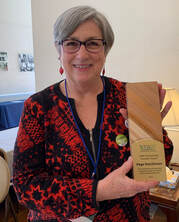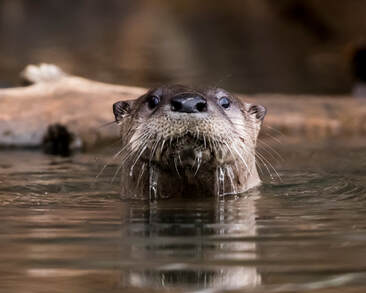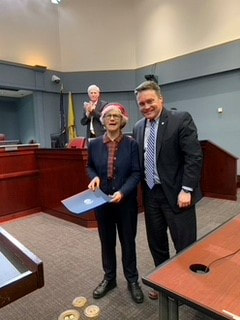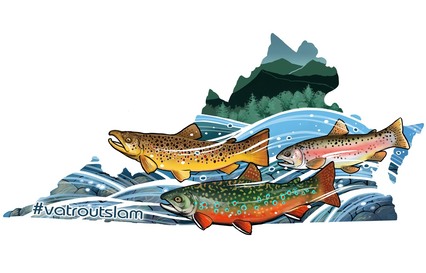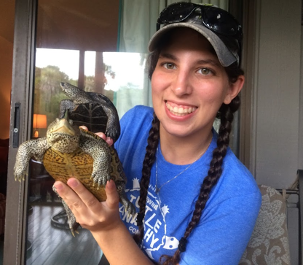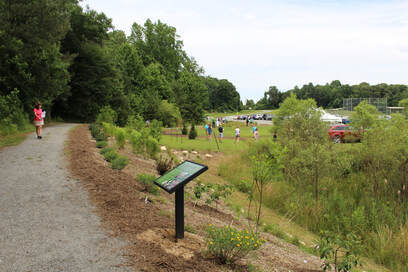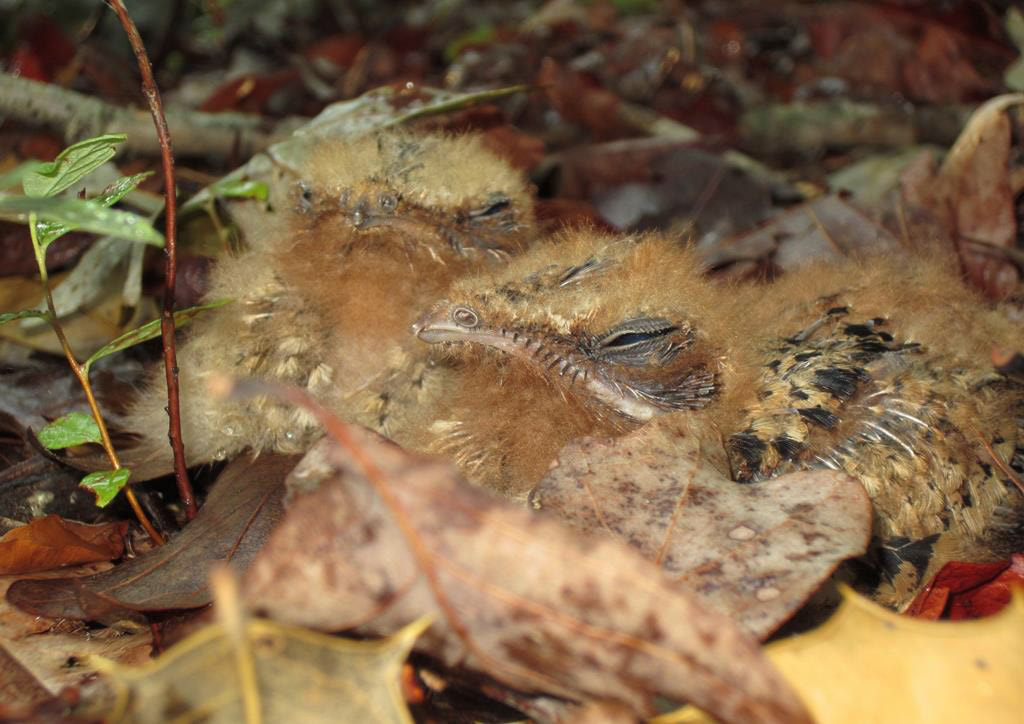A New 5,000 Hour Volunteer and Other New Milestone Achievements
Below, we have listed the volunteers who have achieved these milestones between August 2019 and December 2019 (based on reports received by our office as of January 31.) Some of these volunteers have demonstrated long-term dedication through many years with the program. Others have joined the program more recently, but they have done extraordinary levels of service in a short time frame. We are honored to have all of them sharing their time and talents as Virginia Master Naturalist volunteers, and we are pleased to recognize their efforts in this newsletter and with special milestone pins. Their names are listed alphabetically within each chapter.
In addition, although we cannot list them all here, we are thrilled to recognize the 1,483 Virginia Master Naturalist volunteers who certified or re-certified for 2019, meaning they completed 40 hours of volunteer service and 8 hours of continuing education. Congratulations, everyone!
Thank you to Tiffany Brown, VMN project assistant, for compiling these lists!
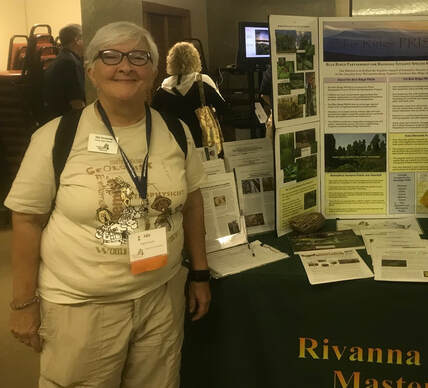 Ida Swenson, Certified Virginia Master Naturalist volunteer in the Rivanna Chapter.
Ida Swenson, Certified Virginia Master Naturalist volunteer in the Rivanna Chapter.
Completing 5,000 hours of Virginia Master Naturalist volunteer service is no easy task. To date, only ten volunteers have achieved this distinction.
By the end of 2019, Ida Swenson joined this exclusive VMN club. Ida is one of the founding members of Rivanna Master Naturalist Chapter and an active participant in multiple capacities. Cindy Westley, Past President of the chapter, writes, “Her knowledge of nature and science is wide-ranging. As a former middle school teacher, she is very comfortable teaching children of all ages using abstract concepts and hands-on resources. Kids immediately relate to her because she teaches on their level, where they live, but with a sense of how to keep the learning experience on track. She is imaginative and interesting and, well, she is cool. Whether it’s working a table at a public science event or community festival or teaching Master Naturalist trainees in the introductory course, Ida is always able to capture the attention and imagination of her audience. She is knowledgeable, dedicated, reliable and really enjoys herself. The RMN and VMN are fortunate to have her as a member and leader.”
Ida joins Marian Childress (Tidwater), Shirley Devan (Historic Rivers), John Ford (New River Valley), Cheryl Jacobson (Historic Rivers), Les Lawrence (Historic Rivers), Susan Powell (Historic Rivers), Jack Price (Old Rag), Jim Scibek (Central Rappahannock), and Robert Toner (Eastern Shore) as part of this 5,000 hour circle of amazing volunteers!
|
2,500 Hours
Marilyn Schroeder, Fairfax Lisa Matthews, Merrimac Farm Stephen Bridges, New River Valley Laura Marlowe, Peninsula Eric Gray, Pocahontas Janet Schroeder, Tidewater Drew Avery, Tidewater 1,000 Hours Norm H. Bell, Alleghany Highlands Bonnie Bernstein, Alleghany Highlands Toni Genberg, Arlington Regional Philip George, Arlington Regional Hillary Davidson, Banshee Reeks Bette Dzamba, Central Blue Ridge Bill Bensiek, Central Virginia Dr. Greg Eaton, Central Virginia Stephen Lichiello, Central Virginia Nancy Pryor, Central Virginia Lee Spradlin, Central Virginia Peter Pulman, Eastern Shore Mimi Stitt, Eastern Shore Mike Bishop, Fairfax Robin Duska, Fairfax Cathy Ledec, Fairfax Kate Guenther, Headwaters Sherry Brubaker, Historic Rivers Karen Grass, Historic Rivers Thad Hecht, Historic Rivers Keith Navia, Historic Rivers Linda Maddra, Historic Southside Suan Crockett, Middle Peninsula Rose Sullivan, Middle Peninsula Brenda Graff, New River Valley Judith McCord, New River Valley Arlene Crabbe-Kilduff, Northern Neck Beth Kendrick, Northern Neck Dee Dee Lyon, Old Rag Troy Bonavita, Peninsula Shirley Church, Peninsula Claire Neubert, Peninsula Beverly Nunnally, Peninsula Susie Engle, Peninsula Madison Ryan, Pocahontas Marjie Giuliano, Rivanna David Smith, Rivanna Nancy Weiss, Rivanna Laura Woody, Riverine Regina Prunty, Roanoke Valley Andrew Miller, Shenandoah Ruth Martin, Tidewater 500 Hours Dawn Peck, Alleghany Highlands Charlie Kahle, Alleghany Highlands Renee Grebe, Arlington Regional David Howe, Arlington Regional Stephanie Martin, Arlington Regional Anne Ellis, Banshee Reeks Cynthia Elkey, Central Blue Ridge Bernice Thiebolt, Central Blue Ridge Mary Ames, Central Piedmont Cathy Pritchett, Central Rappahannock Leslie Raterman, Central Rappahannock Kathy Brandt, Central Virginia Kyrina Johnson, Central Virginia Joseph Allison, Eastern Shore Sharon Renshaw, Eastern Shore Judy Dority, Fairfax Helaine Krob, Fairfax Ashley Ossher, Fairfax Dave Jacobson, Fairfax Malcolm G. Cameron, Jr., Headwaters Adrie Voors, Headwaters Chris Allgyer, High Knob Paxton Allgyer, High Knob Gena Kiser, High Knob Louis Amato, Historic Rivers William Harper, Historic Rivers Lisa Nickel, Historic Rivers Judy Tucker, Historic Rivers Della Carmean, Historic Southside Claudia Lee, Historic Southside Brenda Peters, Historic Southside Monica Hoel, Holston Rivers Marica Pruner, Holston Rivers Kathy Dunn, James River Tom Attanaro, Merrimac Farm Rosemarie Nielsen, Merrimac Farm Charlie Price, Merrimac Farm Henry “Hurrican” Thompson, Middle Peninsula Carl Absher, New River Valley Barbara Glaser, New River Valley Joan Kark, New River Valley Marshal McCord, New River Valley Marcia Murphy, New River Valley Chris Sokol, New River Valley Kevin Howe, Northern Neck Grace Cangialosi, Old Rag Charles Fortuna, Old Rag David Boehnlein, Peninsula Anne Graber, Peninsula Beverly Heimback, Peninsula Caroline Herath, Peninsula Phyllis Kohnman, Peninsula Ward Phelps, Peninsula Gary Wright, Peninsula Jeanette Yoh, Peninsula Willie Fielder, Pocahontas Jane Hesler, Pocahontas Deborah Luzynski-Weber, Rivanna Mary Tilman, Rivanna Roderick Walker, Rivanna Timothy Weber, Rivanna Laura Greenleaf, Riverine Winifred Hebb, Riverine Robert Garst, Roanoke Valley Scott Karns, Roanoke Valley Framk Simms, Roanoke Valley Phyllis Partain, Shenandoah Paul May, Southwestern Piedmont Lizz Stanley, Southwestern Piedmont Bob Humphries, Southwestern Piedmont Susan Elder, Tidewater Elizabeth Mauer, Tidewater Rogard Ross, Tidewater Theresa Tyson, Tidewater |
250 Hours
Chris Baroody, Alleghany Highlands Aileen Spurgeon, Alleghany Highlands Jo Allen, Arlington Regional Kit Britton, Arlington Regional Mary Martha Churchman, Arlington Regional Katherine Cox, Arlington Regional Allison Farrow, Arlington Regional Joan Haffey, Arlington Regional Tom Hahn, Arlington Regional Alda Krinsman, Arlington Regional Carol Mullen, Arlington Regional Kara Pascale, Arlington Regional Kristin Henderson, Banshee Reeks Renee Kitt, Banshee Reeks Kim Norgaard, Banshee Reeks Kim Bryant, Central Blue Ridge Stephan Cassola, Central Blue Ridge Anne Colgate, Central Blue Ridge Michael Fisher, Central Blue Ridge Michael Lachance, Central Blue Ridge Mike Tabony, Central Blue Ridge Armand Thiebolt, Central Blue Ridge Bobi Thornhill, Central Blue Ridge Shannon Brennan, Central Virginia Carla Bruce, Central Virginia Jim Crunk, Eastern Shore Patricia Magee, Eastern Shore Donna Nelson, Eastern Shore Marguerite Long, Eastern Shore Wendy Cohen, Fairfax William (Scott) Schroth, Fairfax Jerry Nissley, Fairfax Liz Train, Fairfax Janet James, Headwaters Janet Joseph, Headwaters Frances Sale, Headwaters Myrel Short, High Knob Beth Walker, High Knob Mary Haines, Historic Rivers Wendy Nelson, Historic Rivers Pat Murphy, Historic Rivers Cynthia Edwards, Historic Southside John Wass, Historic Southside Tanya Hall, Holston Rivers Sharon Trumbley, Holston Rivers Stan Tucker, Holston Rivers James Warden, Holston Rivers Joan Golden, James River William Pawleski, James River Judith Wyatt, James River Terri Mewborn, Merrimac Farm Carol Tretkoff, Merrimac Farm Jan Towne, Middle Peninsula Dan Camden, New River Valley Stephen Cole, New River Valley Rebecca Kidwell, New River Valley Bill Opengari, New River Valley Robert Whiton, New River Valley Mindy Ashton, Northern Neck Stuart Ashton, Northern Neck Sandy Dodge, Northern Neck Bonnie Beers, Old Rag Ann Bowman, Old Rag Alex Bueno, Old Rag Mary O’Meara, Old Rag William Schoenborn, Old Rag Dorothy “Tepp” Tepper Dawn Bonavita, Peninsula Kathy Gallo, Peninsula Christy Gardner, Peninsula Nancy Ivey, Peninsula Pamela Reilly, Peninsula Ande Remington, Peninsula Heidi Ott, Peninsula Charlie Bridges, Pocahontas Allan Heasty, Pocahontas Laurie McAleenan, Pocahontas Sue Tait, Pocahontas Deb Tussey, Pocahontas Jeanne Walter, Pocahontas Mary Wickham, Pocahontas Jack Rayburn, Pocahontas Theresa Rayburn, Pocahontas Victoria Dye, Rivanna Julie Farrell, Rivanna Jennifer Gaden, Rivanna Page Hutchinson, Rivanna Christine Kastan, Rivanna Marilyn Koleszar, Rivanna Dan Kulund, Rivanna Martha Ledford, Rivanna Melanie Perl, Rivanna Barbara Wallace, Rivanna Peppy Winchel, Rivanna Gareth Hunt, Rivanna Terry Atkinson, Riverine Don Mohar, Riverine Dabney Robinson, Riverine Robin Bailey, Roanoke Valley Neil Myers, Shenandoah Sue Teal, Shenandoah Jessica Phillips, Southwestern Piedmont Brian Phillips, Southwestern Piedmont Alan Carter, Tidewater Charlotte Chagnon, Tidewater Mike Hoffman, Tidewater Sarah Howard, Tidewater Beth King, Tidewater Karen McMillian, Tidewater Kathy Wakefield, Tidewater |
A New 5,000 Hour Volunteer and Other New Milestone Achievements Read Post »

